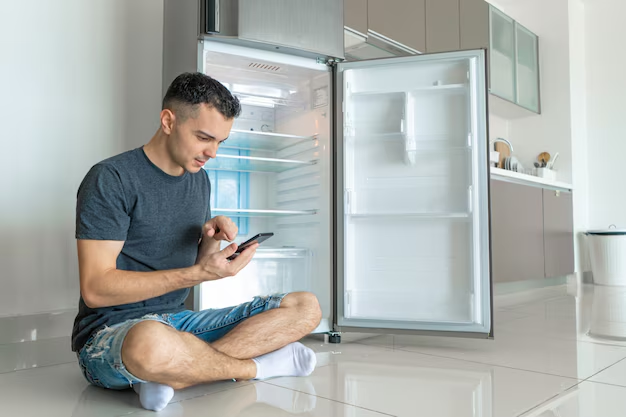What’s the Ideal Temperature Setting for Your Refrigerator?
Ever opened your refrigerator to find your milk spoiled before its expiration date or ice cream that's a little too soft? Setting the right temperature for your fridge isn’t just about keeping things cold—it’s about optimizing freshness and safety. In this complete guide, we’ll unravel the mystery of refrigerator temperature settings, focusing on universally understood insights and practical advice.
Why the Right Temperature Matters
Refrigerators play a crucial role in maintaining the longevity and safety of food, preventing bacterial growth that causes both spoilage and foodborne illnesses. But what is the perfect temperature for a refrigerator? The consensus among experts is that refrigerators should be set at or below 40°F (4°C), with the optimal temperature being around 37°F (3°C). This setting helps keep food fresh while inhibiting the growth of harmful bacteria.
Understanding Refrigerator Temperature
The 40°F Rule
The 40°F rule is based on the fact that most bacteria that cause food spoilage grow rapidly between 40°F and 140°F (4°C to 60°C)—the so-called "Danger Zone" per food safety guidelines. Keeping the fridge below 40°F slows this growth considerably, reducing the risk of illness.
Freezer Settings
While we focus on fridge temperature, it’s worth mentioning that freezers should be set at 0°F (-18°C) to maintain the quality and safety of frozen foods effectively.
Best Practices for Setting Your Refrigerator Temperature
Getting your refrigerator to the optimal temperature can sometimes require a bit of a balancing act. Here's how to make sure your fridge stays cool, but not too cold:
Use a Refrigerator Thermometer
Relying solely on the manufacturer's settings can sometimes lead to inaccuracies. Place a thermometer in your fridge to get the most accurate readings, and adjust accordingly. Make it a habit to check the temperature regularly to ensure consistency.
Adjust According to Usage
Different times of the year and different levels of activity in your kitchen might require minor adjustments to your fridge's settings. If you're opening your fridge more frequently—during a holiday season or party, for instance—consider setting it a bit colder to counteract the warm air that enters each time the door is opened.
Consider Your Contents
The type of food stored can also impact cooling needs. If your refrigerator is stocked with temperature-sensitive foods like dairy or meat, maintain closer to the lower end of recommended settings. For those who store a lot of fresh produce, consider using crisper drawers, which often have their own temperature settings.
Proper Organization
The way you organize your fridge can affect temperature and efficiency. Store ready-to-eat food on top shelves where the temperature is most consistent, and raw meat in the bottom to prevent drips contaminating other food.
Check the Seals
Ensure the door seals are tight and not leaking cool air. An ineffective seal can cause the temperature to fluctuate, leading to less efficient cooling and higher energy bills.
Troubleshooting Common Temperature Issues
Even with the best practices, issues can arise. Here are some common problems and solutions:
Inconsistent Temperatures
If you find that parts of your fridge are cooling unevenly, it may be due to improper airflow. Avoid overcrowding the fridge and make sure vents aren’t blocked by food items.
Freezing on the Fridge Side
When food starts freezing in the fridge compartment, it's often because the temperature is set too low, or warm air is repeatedly entering the unit, potentially due to a faulty seal.
Warm Fridge
If your fridge isn't cooling properly, it could result from a buildup of dust on the condenser coils. Periodically clean these to maintain efficiency.
Enhancing Efficiency and Longevity
Placement Matters
Where your refrigerator is placed can greatly affect its efficiency. A refrigerator needs proper ventilation from the back and sides. Keep it away from heat sources like ovens and direct sunlight.
Regular Maintenance
Routine maintenance helps keep your fridge in top shape. This includes cleaning coils and checking seals. Keeping your fridge clean on the inside will also prevent the growth of odor-causing bacteria.
Practical Summary: Refrigerator Temperature 🌡️
To wrap up, consider the following practical takeaways for an optimal cooling experience:
- Set your fridge between 35°F and 38°F (1.7°C to 3.3°C)
- Use a separate thermometer to monitor temperature accurately
- Adjust according to season and usage
- Organize efficiently; don't block cooling vents
- Check seals regularly for leaks
- Clean coils periodically
Quick Tips for Optimal Fridge Use 📝
- 😎 Keep it cool: Aim for a steady temperature of around 37°F (3°C).
- 🔍 Mind the air: Don’t overcrowd shelves; allow for proper air circulation.
- 🧊 Chill out: Freezers should be set at 0°F (-18°C).
- 🚪 Seal the deal: Regularly check that door seals are airtight.
- 🏠 Right spot: Place your fridge away from direct sunlight and heat sources.
- 🧽 Clean it up: Dust coils and organize contents regularly for maximum efficiency.
Understanding and maintaining the correct refrigerator temperature is key to preserving the quality of your food and ensuring safety for you and your family. By following these tips, you can ensure that your fridge runs efficiently, keeps your food fresh, and extends your appliance's lifespan. Armed with this knowledge, you can now confidently enjoy your kitchen’s coolest corner!
